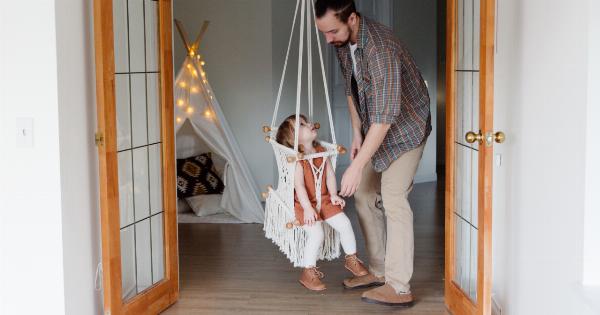In today’s fast-paced and demanding world, it’s easy to feel overwhelmed by the constant stream of requests and obligations.
Whether it’s a co-worker asking for help on a project, a friend asking for a favor, or a family member needing support, it can be challenging to navigate the delicate balance between being helpful and taking care of your own needs. Learning how to say no effectively is a skill that can greatly improve your well-being and relationships. In this guide, we will explore strategies for setting boundaries and mastering the art of saying no.
Why Saying No is Important
Setting boundaries and saying no might seem counterintuitive. After all, we’re often taught that helping others and being selfless are highly valued qualities.
However, constantly saying yes to every request can lead to burnout, resentment, and a neglect of your own needs. It’s important to prioritize self-care and ensure that your time and energy are spent in alignment with your values and goals. Saying no when necessary allows you to protect your well-being and maintain healthy relationships with others.
Recognize Your Limits and Priorities
The first step in mastering the art of saying no is to become aware of your own limitations and priorities. Reflect on what is truly important to you and how you want to spend your time and energy.
This could include your work commitments, personal goals, relationships, and self-care activities. By clarifying your priorities, you can make decisions that align with your values and avoid overcommitting yourself.
Practice Assertive Communication
Assertive communication is a key component of setting boundaries and saying no effectively. It involves expressing your needs and preferences clearly and respectfully, while also considering the needs of others.
When saying no, it’s important to use “I” statements to express your feelings and avoid blame or judgment.
For example, instead of saying, “You always ask too much of me,” you can say, “I feel overwhelmed when I have too many commitments.” Practice assertive communication in both your personal and professional relationships to build healthy boundaries.
Develop Alternative Solutions
Saying no doesn’t have to be a negative or confrontational experience. Instead of simply declining a request, consider offering alternative solutions or compromises.
This can help maintain positive relationships and show that you are still willing to support others within your boundaries. For example, if a colleague asks for help on a project but you don’t have the capacity to take it on, you can suggest another team member who might be available or offer to provide guidance in a limited capacity.
Learn to Trust Your Instincts
Trusting your instincts and listening to your gut feelings is crucial in setting boundaries and saying no. Pay attention to your internal cues and notice how you feel when faced with a request.
If something doesn’t align with your values or feels like a significant burden, it’s important to honor that feeling and decline the request. Learning to trust your instincts can help you make decisions that are in your best interest and protect your well-being.
Practice Self-Care
A fundamental aspect of mastering the art of saying no is prioritizing self-care. Taking care of yourself physically, mentally, and emotionally enables you to show up as your best self for others when you choose to say yes.
Self-care activities can include exercise, meditation, spending time with loved ones, pursuing hobbies, or simply allowing yourself to rest and recharge. Remember that self-care is not selfish, but rather a necessary practice for maintaining balance and overall well-being.
Set Clear Boundaries
In order to effectively say no, it’s crucial to set clear boundaries. Communicate your boundaries to others in a respectful and assertive manner. This may involve expressing your limits in terms of time, energy, or availability.
Be consistent in upholding your boundaries and avoid making exceptions unless it aligns with your priorities and values. Setting clear boundaries not only protects your well-being but also fosters healthier and more respectful relationships.
Manage Guilt and Overcome People-Pleasing Tendencies
Guilt and the desire to please others are common challenges when learning to say no. It’s important to recognize that guilt is a natural response but should not dictate your choices.
Remember that by saying no, you are not rejecting the person making the request but simply prioritizing your own well-being. Overcoming people-pleasing tendencies involves building self-confidence, self-compassion, and realizing that you cannot fulfill everyone’s expectations. Practice self-reflection and remind yourself that it’s okay to put yourself first.
Learn from Experience and Adapt
Mastering the art of saying no is a learning process that requires practice and self-reflection. Pay attention to your experiences and learn from them.
Notice how different responses and approaches yield different outcomes and adjust your strategies accordingly. It’s normal to feel uncomfortable or uneasy at first, but with time, saying no becomes easier and more empowering. Embrace the journey of self-discovery and personal growth as you continue to refine your skills in setting boundaries.
Seek Support
Setting boundaries and saying no can be challenging, especially if you have a history of being a people-pleaser. Don’t hesitate to seek support from friends, family, or mental health professionals if necessary.
Discuss your struggles, share your experiences, and seek advice from those who have successfully established healthy boundaries. Surround yourself with individuals who respect and understand the importance of self-care, and who encourage you to prioritize your own needs.
Conclusion
Mastering the art of saying no is an essential skill for maintaining balance, protecting your well-being, and fostering healthy relationships.
By recognizing your limits and priorities, practicing assertive communication, and trusting your instincts, you can set clear boundaries that respect your needs and values. Remember to prioritize self-care, manage guilt and people-pleasing tendencies, and seek support when needed. With time and practice, you will become more confident in saying no effectively and creating a life that aligns with your true desires.































